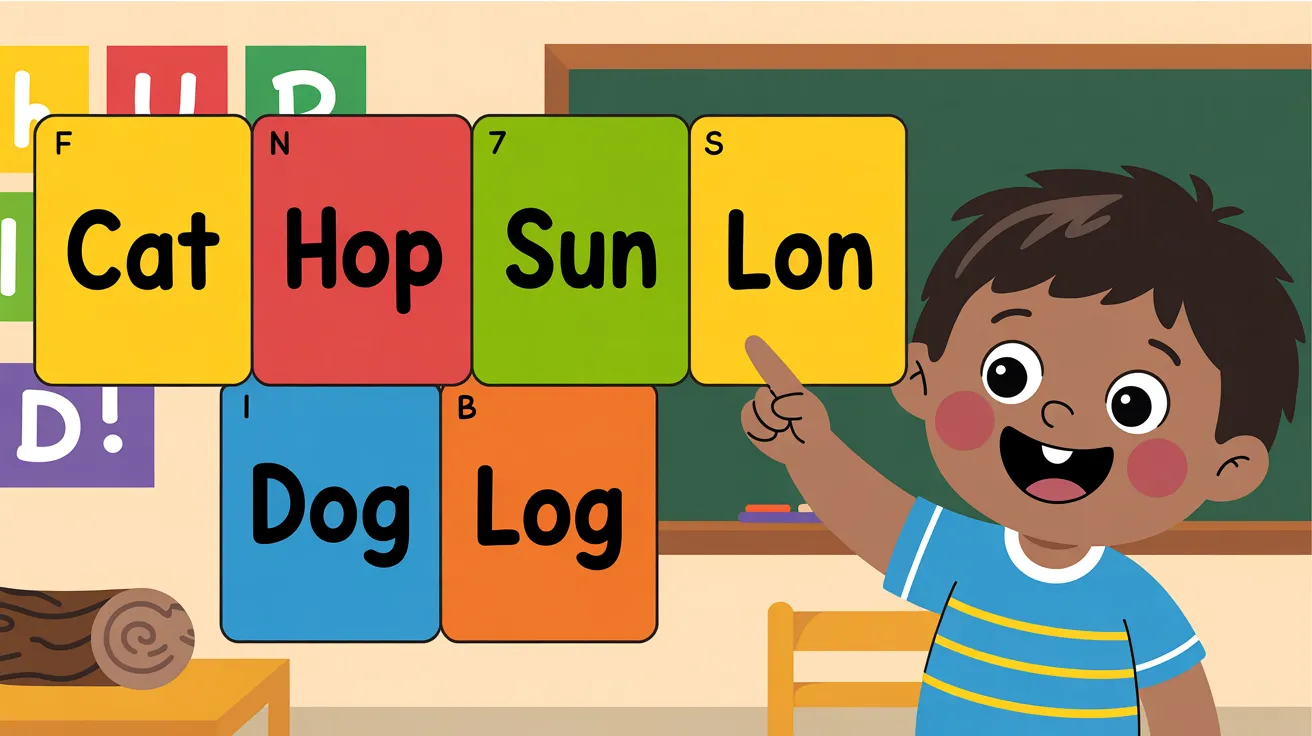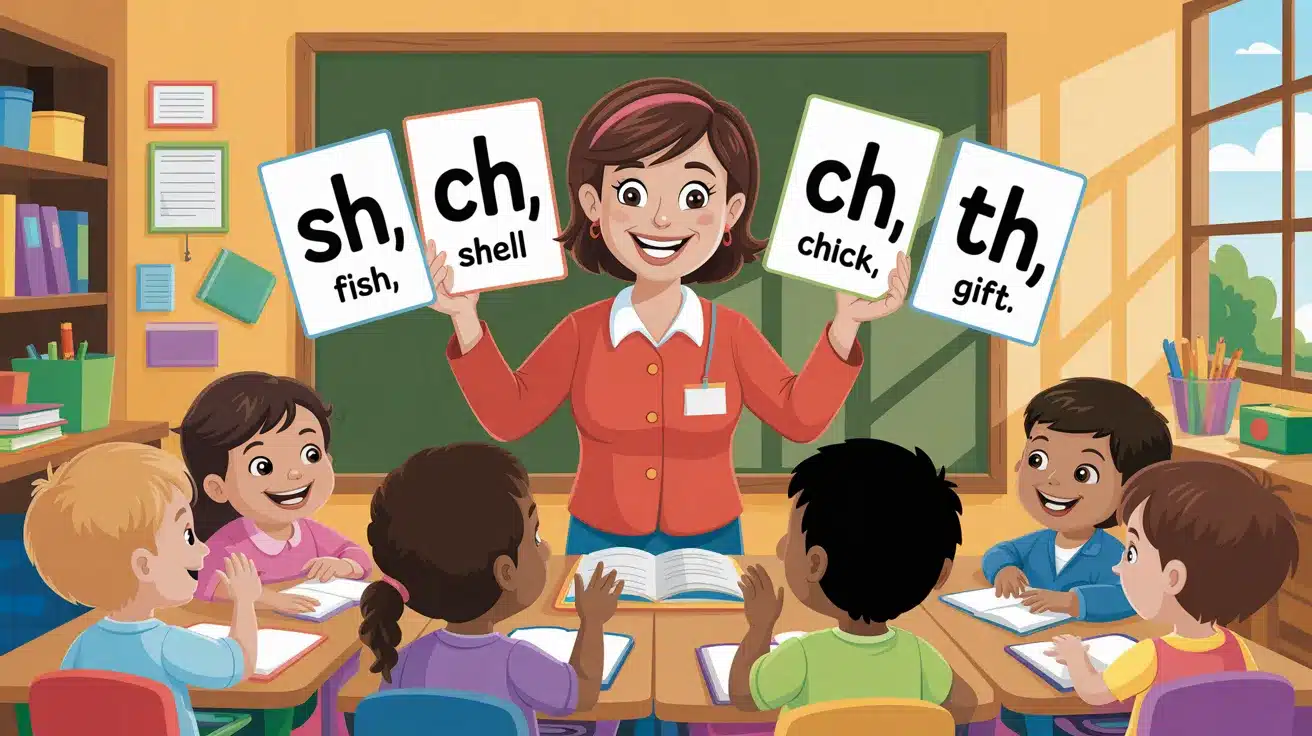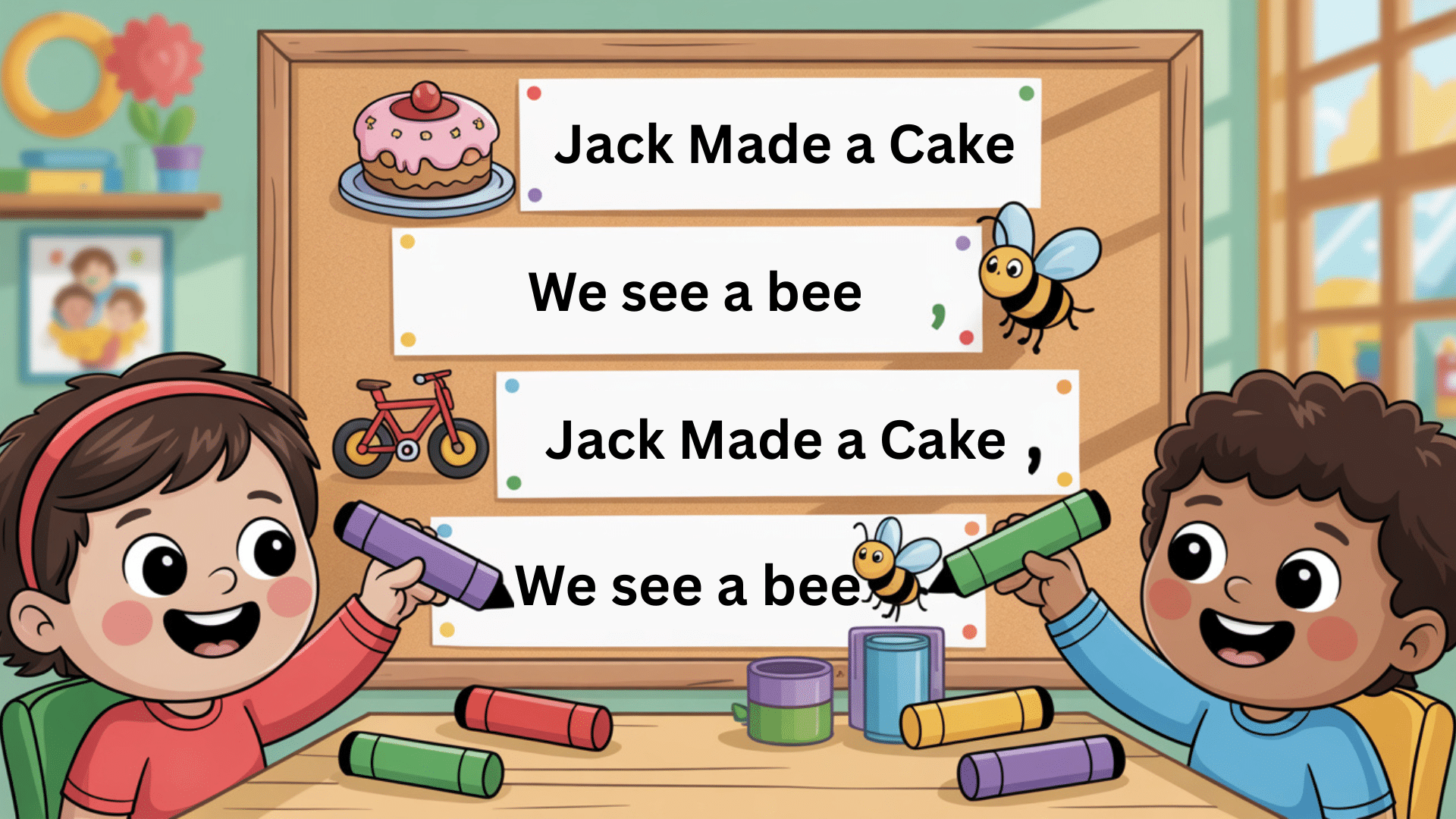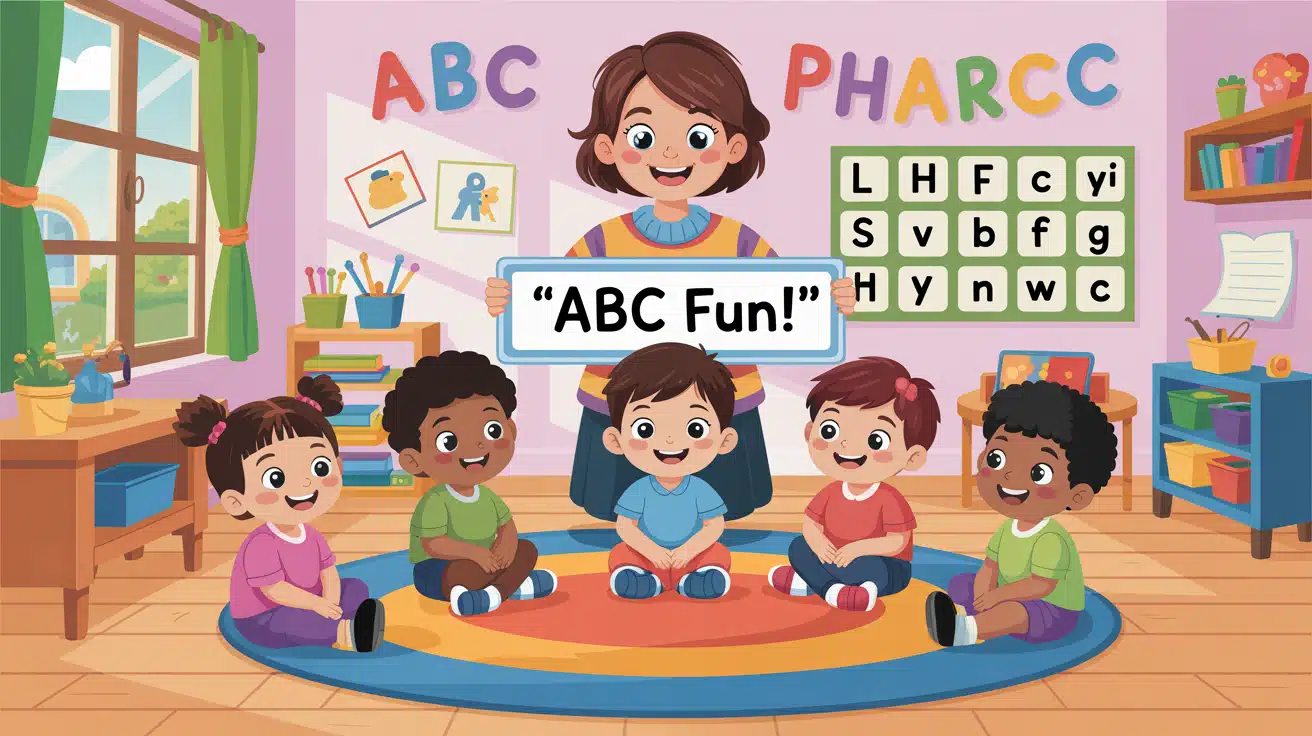Learning to read can be challenging for young children, and you may wonder how to make it easier for your child or students.
It helps to have the right tools, and decodable sentences for kindergarten are one of the simplest ways to support early reading in a clear and easy-to-follow manner.
In this post, I’ll walk you through what they are, when to use them, and how to keep things fun. You’ll get real examples, games, and resource links to help you start strong.
Let’s find the right sentences to build confidence, one word at a time.
Understanding Decodable Sentences
Decodable sentences are short, phonics-based lines that support early reading skills. They focus on sounds and patterns children already know, making them easier to read and practice during the early stages of learning.
Decodable sentences are made using simple words that match the sounds a child has already learned. They include basic spelling patterns and phonics rules.
For example, if a child knows CVC words (consonant-vowel-consonant pattern) like “cat” or “dog,” the sentences might read, “The dog can run.” This helps kids feel confident while reading because they don’t have to guess at new or tricky words.
Why They Help Early Readers
These sentences help children connect letter sounds with words. As they read them aloud, kids build fluency and sound out words with growing ease.
It’s a useful way to strengthen decoding, which is the skill of turning letters into sounds and then into words. This builds confidence and supports long-term reading growth, especially when paired with repeated practice using familiar phonics skills.
When is the Right Time to Use Decodable Sentences?
Most children begin using decodable sentences when they start learning the basics of phonics. This typically occurs in pre-K or kindergarten, but the timing can vary depending on each child’s reading readiness.
Ideal Grade and Reading Level
Children typically start reading decodable sentences in pre-K through first grade. It depends on their ability to recognize letter sounds and mix them into words.
If a child can sound out letters and understand simple phonics patterns, they’re ready to try short sentences.
Early readers at this level benefit from repeated exposure to basic word structures, which helps them transition from single-word reading to full sentences with greater confidence.
Signs Kids are Ready
If a child can decode simple words like “hat,” “sun,” or “bug” without guessing, they are ready to try decodable sentences.
Look for signs such as identifying beginning and ending sounds, blending letters smoothly, and sounding out short words with little help.
These skills demonstrate that the child is prepared to transition from word recognition to sentence reading using phonics-based materials.
Examples of Decodable Sentences
Decodable sentences use sounds children have already learned through phonics. Grouping them by skill type, like CVC words or digraphs, helps kids focus on specific patterns while building confidence and fluency in reading.
CVC Word Sentences

CVC words follow a simple consonant-vowel-consonant pattern, making them perfect for beginning readers. These sentences include short, easy-to-sound-out words using familiar sounds. They’re great for practicing blending and fluency with no surprises.
Examples:
- The cat is on the mat.
- Sam can hop.
- The sun is hot.
- Ben fed the dog.
- I sit on the log.
Sentences with Digraphs

Digraphs are pairs of letters that make one sound, like “sh,” “ch,” or “th.” These sentences help students build fluency while learning to spot and pronounce digraphs correctly in context.
Examples:
- Fish swim in a dish.
- She has a red shell.
- The chick is in the box.
- I wish for a gift.
- Chad gets thick chips.
Long Vowel Sentences

These sentences use long vowel sounds, often introduced after kids master CVC words and common digraphs. They focus on vowel-consonant-e and vowel teams.
Examples:
- Jake made a cake.
- We see a bee.
- Mike rides his bike.
- The rope is in a pile.
- Sue smiled at me.
Blends and R-Controlled Vowels

Blends combine two or more consonants, while r-controlled vowels mix a vowel with the letter “r” to make a new sound. These sentence types help kids decode more complex sound combinations.
Examples:
- The frog jumps from the grass.
- I clap with Fred.
- Mark has a cart.
- The crab is in the sand.
- Clark spins a drum.
Fun Ways to Use Decodable Sentences
Using decodable sentences doesn’t have to feel like a drill. You can turn reading practice into a fun, active part of your day with games, movement, and hands-on activities that keep kids engaged.
Pocket Chart Activities
Pocket charts are a great way to build sentences using word cards. Kids can match words, move them around, or create new lines based on sound patterns. This hands-on approach provides them with the opportunity to observe sentence structure while practicing phonics.
Use different colors to represent beginning, middle, and end sounds, helping them sort and blend more easily as they form complete decodable sentences independently.
Read and Reveal Cards
Read and reveal cards are simple tools that let kids uncover one part of a sentence at a time.
Fold the card to show just the first word, then slide to the next. This method helps slow down reading and lets students sound out each word.
It supports focus and reduces guessing, while building confidence in reading complete sentences correctly without rushing.
Sentence Scramble Games
Scrambled sentence games are fun and interactive. Kids receive mixed-up word cards and must put them in the right order. This supports sentence structure and word recognition.
It also strengthens their understanding of how sentences work, including proper capitalization at the beginning and punctuation at the end. You can play this in small groups or as a quick class challenge to boost both teamwork and fluency.
Movement-Based Learning
Adding movement turns reading into a full-body experience. Place word cards around the room and let kids jump, tap, or point to build sentences.
They might match sounds by walking to the right word or act out what the sentence says. These activities are beneficial for young learners who require movement during lessons. It keeps energy high while reinforcing phonics in a playful setting.
If you enjoy adding movement and real-life context to reading time, you might also love these fun voting activities for kindergarten.
Teaching Tips and Best Practices
Decodable sentences work best when used with a purpose and a plan. With the right approach, you can guide students from simple sounds to fluent reading while maintaining a fun and meaningful learning experience.
How to Introduce Decodable Sentences
Before jumping into complete sentences, make sure students are comfortable with the individual word types you’ll be using. Start with a review of letter sounds, CVC words, or blends, depending on their level.
Then, move to short sentences that use those same patterns. This slow build helps kids connect what they already know to new reading tasks, keeping lessons clear and frustration low from the start.
Keeping Students Engaged
Keeping young readers interested takes more than repetition. Try using pictures, simple stories, or student names in your sentences. Make the sentences silly, relatable, or action-based.
Allow students to select words or modify parts of a sentence to feel more engaged. A little humor or personalization can go a long way in helping them stay focused and eager to read more during each session.
Tracking Progress
To track growth, use simple tools like checklists or fluency charts. Monitor how well students decode words and read complete sentences aloud. Record progress during weekly reading sessions or through short assessments.
You can also track how quickly they move through new phonics patterns. Clear records help you plan next steps, provide extra support where needed, and celebrate progress over time in a visible way.
Where to Find Free & Paid Resources
You don’t need to create everything from scratch. There are plenty of free and low-cost decodable sentence resources online. Below are trusted places to find tools based on your needs and focus area.
Free Printables (Download Section)
You can find free decodable sentence printables on websites like My Nerdy Teacher and Pinterest. These often include sample cards, sentence strips, and pocket chart sets.
Look for options sorted by phonics level or skill type. Many downloads are ready to print and use immediately, making them perfect for at-home practice or classroom activities without requiring extra preparation.
Search for “free decodable sentences” with your target sound.
Affordable Paid Bundles
If you’re looking for complete sets, Teachers Pay Teachers (TPT) offers many high-quality options. Sellers like Miss Kindergarten, Learning at the Primary Pond, and Lead in Literacy provide bundles with 100s of cards, ready-to-use games, and matching worksheets.
Most listings include sample pages, allowing you to see what’s inside before making a purchase. These bundles save time and help keep your teaching organized.
Bundle Recommendations by Skill
To get the most out of your resources, choose bundles by skill type.
- CVC Sentences: Great for beginning readers using short vowels.
- Digraphs and Blends: Ideal for next-step decoding.
- Long Vowels and Magic E Words: Use once students master basic patterns.
Some bundles mix all skill types, while others keep them separate. Pick the one that fits your student’s reading stage for smoother lessons.
Conclusion
If you’ve made it this far, you now have a clear path for using decodable sentences for kindergarten with your learners. I hope you feel more confident about where to begin and how to make it enjoyable.
You don’t have to tackle everything at once; just choose one or two ideas and test them out. I’ve found that taking small steps truly leads to significant progress in reading.
If this helped you, I’d love for you to check out more of my blogs for simple, helpful tools that support your journey.




